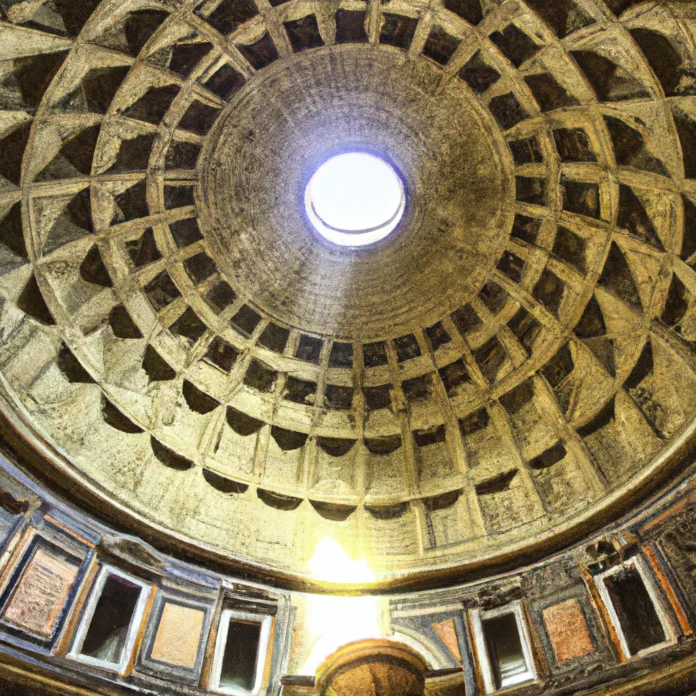Pantheon Guided Tour in Rome
Rome, the eternal city, offers countless historical and architectural marvels, but none quite as significant as the Pantheon. This ancient temple, dedicated to the gods of Ancient Rome, stands as a testament to Roman engineering and artistry. In this guide, we will delve into the history, architecture, and visitor experience of the Pantheon, providing you with all the information necessary for a memorable visit.
Historical Significance of the Pantheon
Originally built in 27 BC by Marcus Agrippa, the Pantheon has undergone several renovations, most notably by Emperor Hadrian around 120 AD. This site has served multiple purposes throughout history, transforming from a pagan temple to a Christian church, Santa Maria ad Martyres, in the 7th century. Its continuous use over the centuries has helped preserve its structure, making it one of the best-preserved monuments from ancient Rome.
Architectural Marvels: A Closer Look
The Pantheon is renowned for its magnificent dome, which remains the largest unreinforced concrete dome in the world. The oculus at its center, measuring 27 feet in diameter, allows natural light to illuminate the interior, creating an ethereal atmosphere. The harmonious proportions of the building, with its circular rotunda and portico of massive Corinthian columns, exemplify the architectural ingenuity of the Romans.
The Design and Structure of the Pantheon
The Pantheon features a rotunda that is 43.3 meters in diameter, equal to its height, a design that symbolizes the divine harmony of the universe. The entrance is marked by a grand portico with 16 columns, each made from Egyptian granite and weighing approximately 60 tons. The interior is adorned with marble flooring and niches that once housed statues of the gods, further highlighting the temple’s sacred purpose.
Visitor Information
Visiting the Pantheon offers an unparalleled opportunity to witness the grandeur of ancient Roman architecture. The entrance is free, but we recommend booking a guided tour to enhance your understanding of its historical context and architectural details. Guided tours typically last around 30 to 60 minutes and provide insights that are often missed by casual visitors.
How to Book on Viator
Booking a guided tour of the Pantheon is simple through Viator. Follow this link to secure your reservation: Book Your Tour on Viator. This platform offers a variety of tours, allowing you to choose one that best fits your schedule and interests.
What to Expect on Your Guided Tour
A typical guided tour of the Pantheon will begin outside the building, where your guide will provide an overview of its history and significance. As you enter, you will be struck by the sheer scale and beauty of the interior. Guides usually share fascinating anecdotes about the structure’s construction, its various uses over the centuries, and its influence on modern architecture. Expect to learn about the symbolism behind the design and how it reflects Roman beliefs and practices.
Accessibility and Visitor Amenities
The Pantheon is accessible to visitors with disabilities, with ramps available for entry. Inside, there are no restrooms, so it is advisable to plan accordingly. The surrounding area offers several cafes and shops where visitors can take a break after their tour.
Tips for Visiting the Pantheon
- Visit Early or Late: To avoid crowds, consider visiting early in the morning or later in the afternoon.
- Dress Code: As the Pantheon is a functioning church, dress modestly and respectfully.
- Photography: Photography is allowed, but be mindful of other visitors and the sacredness of the space.
- Combine with Nearby Attractions: The Pantheon is located near other significant sites, such as Piazza Navona and the Trevi Fountain, making it easy to plan a day of sightseeing.
Conclusion
In conclusion, a guided tour of the Pantheon is an essential experience for anyone visiting Rome. This architectural masterpiece not only represents the ingenuity of ancient Roman engineering but also serves as a window into the spiritual and cultural life of the city during its peak. By booking a tour through Viator, you can gain deeper insights into this magnificent structure. For more travel tips and lifestyle content, visit Izase.
Disclaimer: This information is accurate to the best of our knowledge; however, there may be changes or mistakes. Please verify exact details on the Viator booking page.




